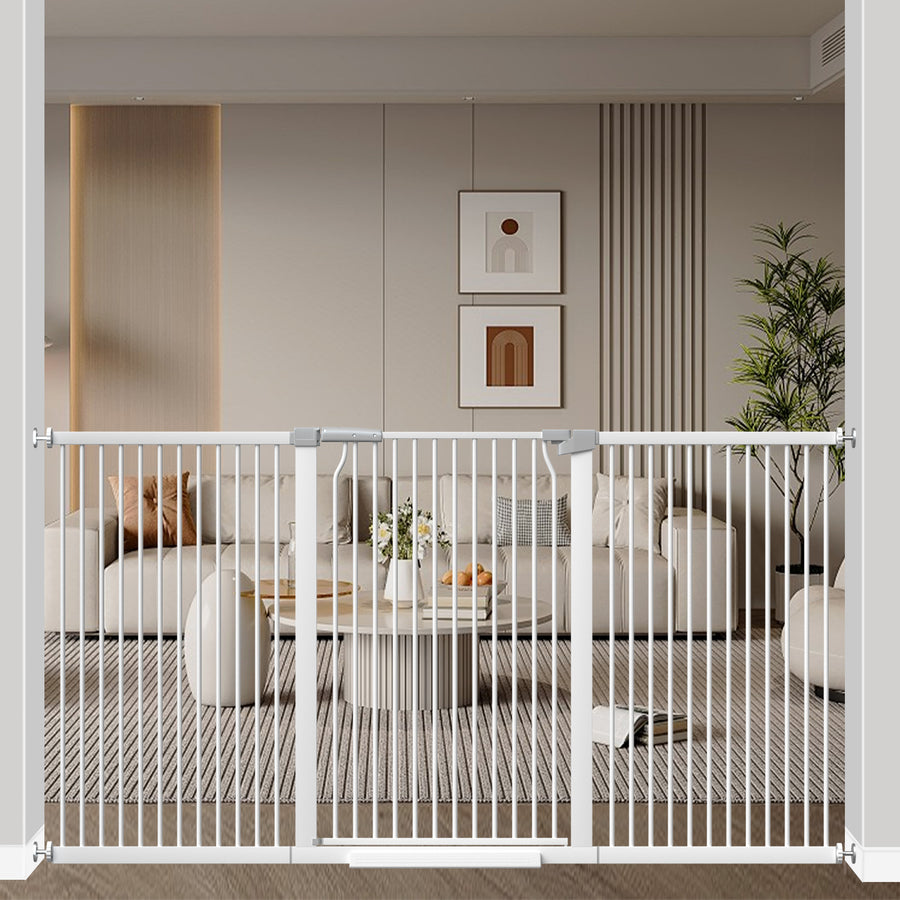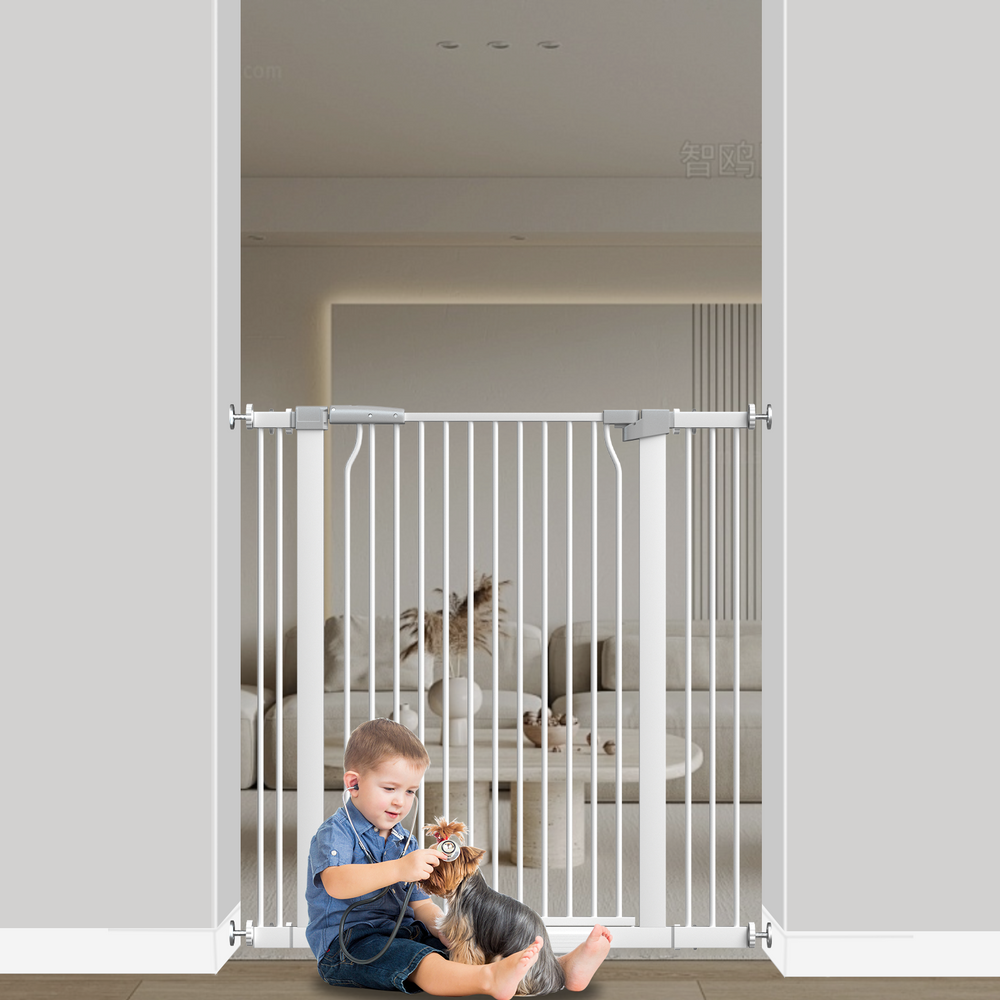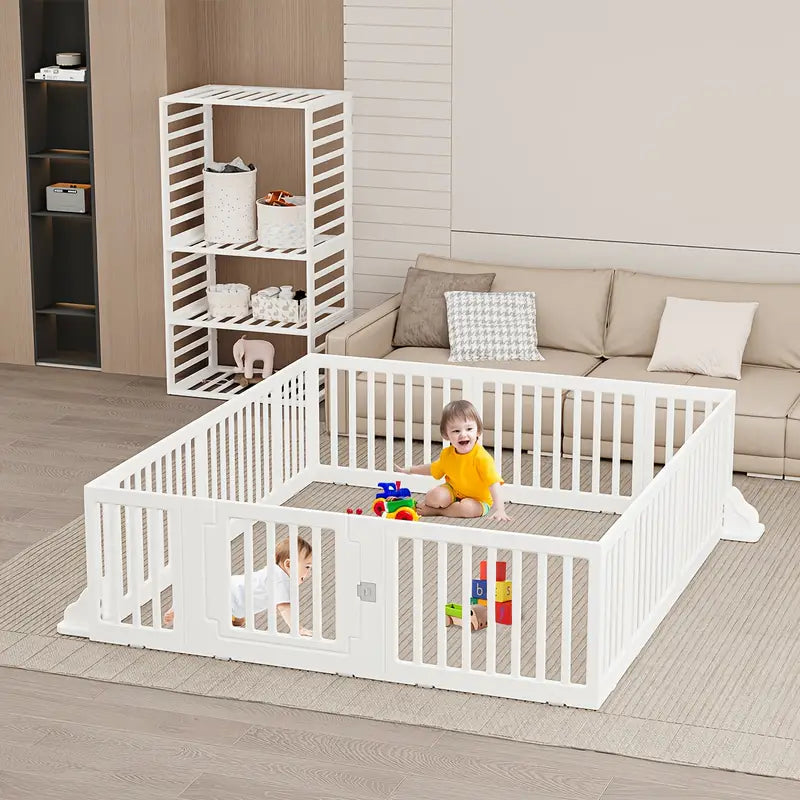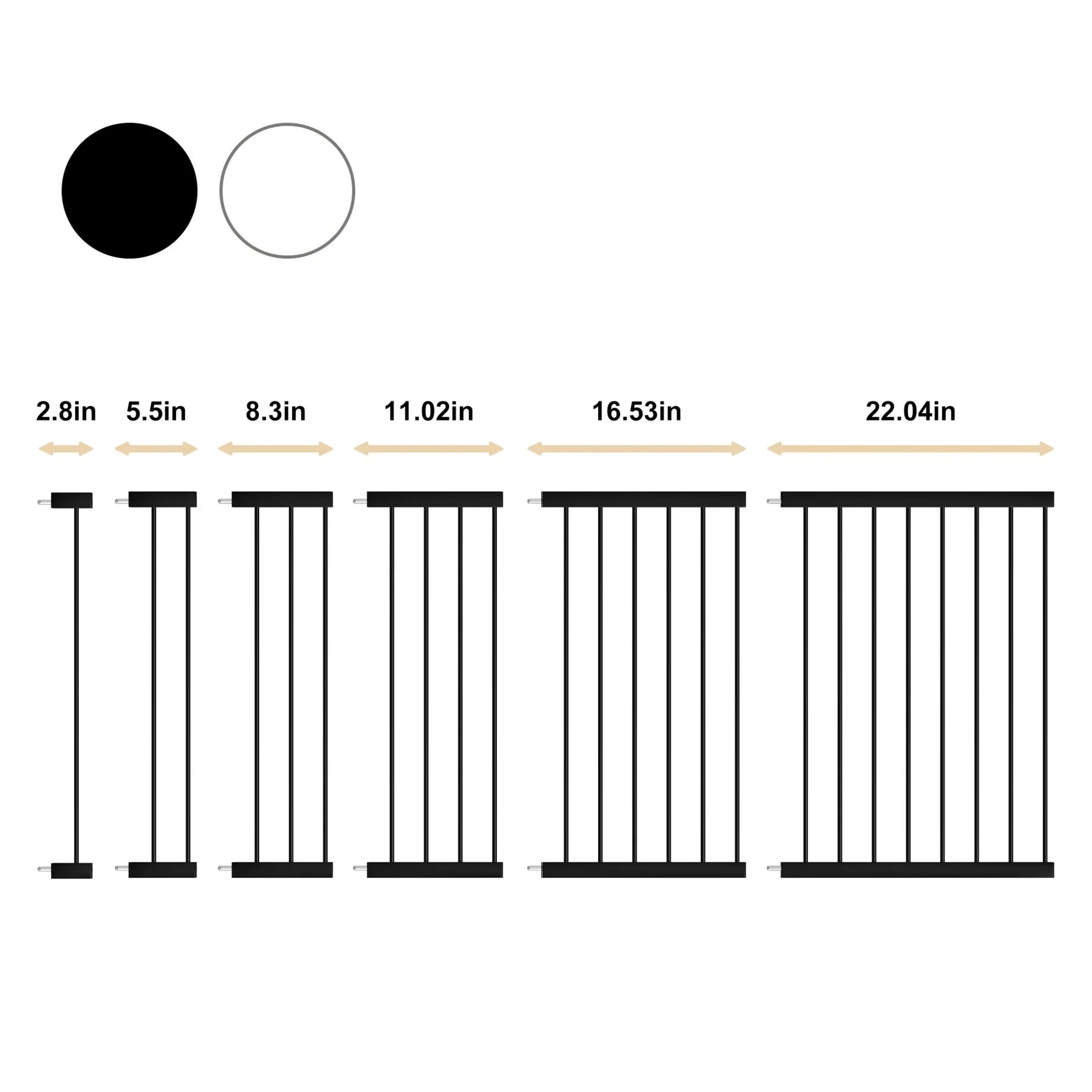Essential Guide to Choosing Window Safety Locks for Babies
Understanding Window Safety Locks for Babies
Importance of Window Safety
Windows can be a real danger for little ones. Kids are curious, and windows offer a view to the outside world, making them attractive. However, falls from windows can lead to serious injuries. That's why window safety is so important, and window safety locks are a key part of creating a safe environment. It's not just about preventing falls; it's also about peace of mind for parents. We want our kids to explore and learn, but we also need to make sure they're protected from potential hazards. Think of it like this: you wouldn't leave a hot stove unattended with a toddler nearby, and windows deserve the same level of attention.
Types of Window Safety Locks
There are several types of window safety locks available, each designed for different window styles and levels of security. Here are a few common options:
- Sash Locks: These are great for double-hung windows. They consist of two parts that connect to keep the window closed. Sash locks are easy to install and provide a good level of security.
- Window Handle Locks: These locks are integrated into the window handle, automatically locking when the window is closed. If your child is clever, consider handle locks that require a key.
- Cable Window Restrictors: These limit how far a window can open. They consist of a cable connecting the window to the frame. Cable restrictors are a good option if you want ventilation but also want to prevent a child from fully opening the window.
How Window Locks Work
Window locks work by physically preventing a window from opening beyond a certain point, or from opening at all. The basic idea is simple: add a barrier that a child can't easily bypass. Some locks require a key or a special tool to unlock, while others have a release mechanism that's difficult for small children to operate. The best window locks are sturdy, easy for adults to use, and difficult for children to tamper with. It's also important to make sure that the locks are properly installed and maintained to ensure they function correctly.
It's important to remember that window locks are just one part of a comprehensive window safety plan. Supervision is still key. No lock can replace a watchful eye. Also, teaching children about window safety is important. They need to understand the dangers of playing near windows and the importance of not tampering with the locks.
Choosing the Right Window Safety Locks
Okay, so you're ready to get some window safety locks. Great! But with so many options, how do you pick the right ones? It's not as simple as grabbing the first thing you see. You need to think about a few things to make sure they actually work for your windows and your kids.
Factors to Consider
First off, think about how you use your windows. Do you like to keep them open a crack for fresh air? Or are they usually shut tight? This will affect the type of lock you need. Also, consider your child's age and development. A simple lock might work for a baby, but a curious toddler might figure it out quickly. Think about the strength and durability of the lock itself. You don't want something that will break easily.
Here's a quick rundown of things to keep in mind:
- Window Usage: How often do you open the windows?
- Child's Age: Are they a baby or a toddler?
- Lock Strength: Is it durable and hard to break?
- Ease of Use (for you): Can you easily open and close the window when needed?
Compatibility with Window Types
Not all windows are created equal, and neither are window locks. What works on a double-hung window might not work on a sliding window. Casement windows have their own needs too. Make sure the lock you choose is specifically designed for your window types. Otherwise, you're just wasting your money. Here's a quick guide:
- Double-Hung Windows: Sash locks or window stops work well.
- Sliding Windows: Sliding window locks that prevent the window from moving.
- Casement Windows: Handle locks or opening control devices are good choices.
Safety Standards and Certifications
This is a big one. You want to make sure the locks you're buying meet safety standards. Look for certifications from recognized organizations. This means the locks have been tested and meet certain requirements for safety and durability. Don't just trust the packaging; do a little research. A good place to start is by checking if the window locks have been tested.
It's easy to get overwhelmed by all the choices, but taking the time to find the right window safety locks is worth it. Your child's safety is the most important thing. Don't be afraid to ask for help from a professional if you're not sure what to choose. They can assess your windows and recommend the best options for your needs.
Installation Tips for Window Safety Locks
DIY Installation Guide
Okay, so you've got your window safety locks and you're ready to install them yourself? Awesome! First things first, read the instructions. I know, nobody actually reads them, but trust me, it'll save you a headache. Make sure you have all the tools you need – usually just a screwdriver, maybe a drill, and definitely a pencil.
- Clean the window frame where you're installing the lock. This helps the adhesive stick better (if your lock uses adhesive).
- Measure twice, install once. Seriously, get the placement right before you start drilling or sticking anything.
- Test the lock after installation. Make sure it's secure and that it actually prevents the window from opening too far.
Professional Installation Services
Sometimes, DIY isn't the way to go. If you're not comfortable drilling into your window frames, or if you just want to make absolutely sure the locks are installed correctly, consider hiring a professional. They'll have the experience and the right tools to get the job done quickly and safely. Plus, they can advise you on the best type of lock for your specific windows. It might cost a bit more, but it's worth it for the peace of mind. A professional can help you with window and sill safety.
Common Mistakes to Avoid
Alright, let's talk about some common pitfalls. One big mistake is not cleaning the window frame before installing adhesive locks. This can cause the lock to fail over time. Another is overtightening screws, which can strip the screw holes or even crack the window frame. And finally, make sure you're installing the lock in the right orientation – some locks are designed to only work one way.
Don't rush the installation process. Take your time, double-check your work, and make sure everything is secure. It's better to spend an extra few minutes now than to have a window lock fail later.
Here's a quick list of things to keep in mind:
- Skipping the instructions. Read them!
- Not using the right tools.
- Ignoring window compatibility. Make sure the lock fits your window type.
Additional Window Safety Measures

Using Window Guards and Stops
Window guards and stops are great additions to window safety locks. Window guards are like bars that cover the window opening, preventing falls while still allowing air to flow. Window stops, on the other hand, limit how far a window can open. It's a good idea to install both for maximum protection. They're easy to install and can give you peace of mind.
Securing Furniture Near Windows
Kids are climbers, it's just a fact. That's why you need to think about what's near your windows. If you have furniture like chairs, tables, or bookcases close by, your child might use them to climb up to the window. Here's what you can do:
- Move furniture away from windows. Create a zone where kids can't easily reach the window.
- Secure heavy furniture to the wall. This prevents tipping if your child tries to climb it.
- Consider the placement of smaller items. Even things like toy boxes can be used as steps.
It's not just about preventing falls. Kids can also reach window cords or open windows wider than they should if they have something to stand on. A little rearranging can make a big difference.
Managing Blind and Curtain Cords
Window blind and curtain cords are a real hazard for babies and young kids. They can easily get tangled in them, which can lead to strangulation. Here are some ways to make your window coverings safer:
- Go cordless. Cordless blinds and shades are the safest option. They eliminate the strangulation risk completely.
- Use cord shorteners or tie-downs. These keep cords out of reach of children.
- Replace looped cords. If you have looped cords, cut the loop and install tassels on each end. You can find window safety locks that help with this.
- Keep cords out of reach. Make sure cords are always high enough that kids can't grab them. You can also use cord cleats to wrap the cords around and keep them secure. It's also a good idea to consider safety window film to reinforce the glass.
Maintaining Window Safety Locks

Regular Inspections
Okay, so you've got your window safety locks installed. Great! But don't just forget about them. Regularly check your window locks to make sure they're still doing their job. I try to do this at least once a month, but honestly, sometimes it's more like every other month. Look for things like:
- Loose screws
- Cracked or broken parts
- Locks that are difficult to open or close
- Any signs of wear and tear
If you find anything that's not quite right, fix it ASAP. It's better to be safe than sorry, especially when it comes to childproofing your windows.
Cleaning and Upkeep
Dust, grime, and other gunk can build up on your window locks over time, making them harder to use. Give them a good cleaning every now and then to keep them in tip-top shape. I usually just use a damp cloth and a little bit of mild soap. Avoid using harsh chemicals or abrasive cleaners, as these can damage the locks. Also, make sure to dry the locks thoroughly after cleaning to prevent rust.
When to Replace Locks
Even with regular maintenance, window safety locks won't last forever. Eventually, they'll wear out and need to be replaced. Here are some signs that it's time for new locks:
- The locks are visibly damaged or corroded.
- The locks are no longer effective at preventing the window from opening.
- The locks are difficult to operate, even after cleaning and lubrication.
- You've had the locks for a long time (5+ years) and want to upgrade to a newer, more secure model. Consider safety window film for added protection.
It's important to replace window safety locks as soon as they show signs of wear or damage. Don't wait until it's too late. Your child's safety depends on it.
Educating Children About Window Safety
Teaching Safe Window Behavior
It's easy to overlook, but teaching kids about window safety is super important. Start early! Explain that windows aren't toys and shouldn't be climbed on. Use simple language they can understand. For example, instead of saying, "Don't climb on the window sill," try, "Windows are for looking, not climbing."
- Show them how to open and close windows safely (if they're old enough).
- Explain why we have window safety locks and why they're important.
- Always supervise young children near windows.
It's a good idea to have regular chats about window safety, especially as kids grow and become more curious. Make it a normal part of your safety talks, just like crossing the street or not talking to strangers.
Involving Older Siblings
Older siblings can be a huge help in reinforcing window safety. They can act as role models and help younger kids understand the rules.
- Encourage older kids to remind their younger siblings about window safety.
- Teach them how to identify potential hazards, like furniture too close to a window.
- Make it a team effort – everyone is responsible for keeping each other safe.
Reinforcing Safety Lessons
Repetition is key when teaching kids about safety. Don't just have one conversation and assume they'll remember everything. Keep bringing it up, especially when you're near windows. Make it fun and engaging, not scary. You could even use games or stories to reinforce the lessons. For example, create a game where they spot potential window hazards in the house.
- Use positive reinforcement – praise them when they demonstrate safe behavior.
- Make it a habit to check window locks together as a family.
- Be consistent with your message – everyone in the family should be on the same page.
Emergency Preparedness with Window Safety
Quick-Release Mechanisms
It's super important to think about how you'd get out of a window quickly in an emergency, even with window safety measures in place. Make sure any window guards or locks you use have a quick-release feature that adults can easily operate. You don't want to fumble around with complicated mechanisms when every second counts. Test these releases regularly to make sure they're still working smoothly. It's also a good idea to show everyone in the house how they work, including older kids, so they can help if needed.
Creating an Emergency Plan
Having window safety locks is great, but it's only part of the puzzle. You also need a solid emergency plan that includes windows as potential escape routes. Think about different scenarios, like a fire, and how you'd get everyone out safely.
Here are some things to consider:
- Identify which windows could be used for escape.
- Make sure there's a clear path to those windows.
- Keep a sturdy step stool near windows that are higher up.
It's easy to assume you'll remember everything in a crisis, but adrenaline can mess with your memory. Writing down your plan and practicing it regularly will make it much more likely that you'll react effectively when it matters most.
Practicing Safe Exits
Talking about an emergency plan is one thing, but actually practicing it is what really makes a difference. Run drills with your family to simulate different emergency situations and how you'd use the windows to get out. This helps everyone get familiar with the process and identify any potential problems. Time how long it takes to open the window safety locks and get out, and adjust your plan as needed. The more you practice, the more prepared you'll be.
Wrapping It Up
In conclusion, making your windows safe for your little ones is super important. By using window locks, guards, and other safety measures, you can help prevent accidents and keep your child safe. Remember, it’s not just about installing these devices; it’s also about keeping an eye on your kids. Always supervise them around windows, and teach them how to be safe. With the right precautions, you can create a secure space for your child to explore and enjoy without worry. So, take these tips to heart, and make your home a safer place for your family.






Leave a comment